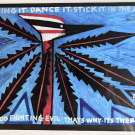Feathers - A Primary Material
RH.6-8.4, RH.6-8.7, HSS 8.8.2, Connecting—Anchor Standard 11, 7.VA:RE8, 8.VA:RE7.1This lesson invites students to explore the deep and enduring connection between humans and feathers, focusing on their cultural and artistic significance in Native California. Feathers have long held a central place in Native life, symbolizing both celebration and spiritual balance within a once-thriving ecosystem teeming with birds. Students will discover how feathers served not only as striking artistic materials but also as powerful expressions of identity, ceremony, and ancestral tradition. Through thoughtful observation, note-taking, and discussion, learners will examine the observable qualities of feathers, understand how and why specific feathers were chosen, and explore how feathers were combined with other natural materials to create meaningful cultural objects. With beautiful images, a traditional story, and interactive reflection, this lesson offers a window into the sophisticated ways Native California tribes honored and utilized this cherished natural resource. Teachers will find this opportunity to connect students with Indigenous knowledge, environmental awareness, and the power of cultural expression.

